
The Legendary Inca Trail: A Journey Through Time
Experience the legendary Inca Trail in Peru: a historic trek through Andean landscapes, ancient ruins, and the awe-inspiring Machu Picchu.
The Inca Trail in Peru is one of the world's most famous trekking routes. Winding through the Andean mountains and lush cloud forests, the trail leads you to the majestic Machu Picchu, the Lost City of the Incas. This ancient path offers a unique blend of natural beauty, history, and adventure. As you hike the trail, you will pass through ancient Incan ruins, quaint villages, and breathtaking landscapes. Each step brings you closer to understanding the rich culture and history of the Inca civilization. The trail is a challenging four-day trek, but the rewards are priceless. The views of snow-capped peaks, verdant valleys, and mystical archaeological sites are unforgettable. The final destination, Machu Picchu, is a marvel of ancient engineering and architecture. Rising dramatically above the Sacred Valley, it offers panoramic vistas that will leave you in awe. Whether you're an experienced trekker or a history enthusiast, the Inca Trail promises an unforgettable journey into the heart of Peru's cultural heritage.
Local tips in Inca Trail
- Book your trek permits well in advance, as they are limited and sell out quickly.
- Acclimatize to the altitude in Cusco for at least two days before starting your trek.
- Pack light but include essentials like a good quality sleeping bag, warm clothing, and waterproof gear.
- Hire a reputable guide or join a guided tour for a safer and more informative experience.
- Bring altitude sickness medication and stay hydrated to avoid altitude-related issues.
The Legendary Inca Trail: A Journey Through Time
The Inca Trail in Peru is one of the world's most famous trekking routes. Winding through the Andean mountains and lush cloud forests, the trail leads you to the majestic Machu Picchu, the Lost City of the Incas. This ancient path offers a unique blend of natural beauty, history, and adventure. As you hike the trail, you will pass through ancient Incan ruins, quaint villages, and breathtaking landscapes. Each step brings you closer to understanding the rich culture and history of the Inca civilization. The trail is a challenging four-day trek, but the rewards are priceless. The views of snow-capped peaks, verdant valleys, and mystical archaeological sites are unforgettable. The final destination, Machu Picchu, is a marvel of ancient engineering and architecture. Rising dramatically above the Sacred Valley, it offers panoramic vistas that will leave you in awe. Whether you're an experienced trekker or a history enthusiast, the Inca Trail promises an unforgettable journey into the heart of Peru's cultural heritage.
When is the best time to go to Inca Trail?
Iconic landmarks you can’t miss
Historic Sanctuary of Machu Picchu
Explore the breathtaking beauty and rich history of Machu Picchu, the iconic Incan citadel nestled in the majestic Andes Mountains.

Plaza Mayor de Cusco
Explore the vibrant Plaza Mayor de Cusco: a historic heart of culture, art, and community in the enchanting city of Cusco, Peru.
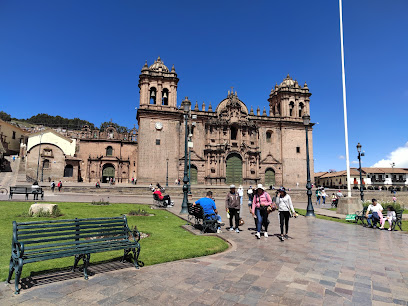
Ollantaytambo Sanctuary
Discover the historic beauty of Ollantaytambo Sanctuary, a remarkable Inca archaeological site in Peru's Sacred Valley, perfect for culture and adventure.
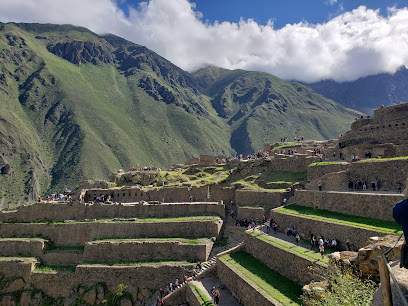
Saqsaywaman
Discover Saqsaywaman, an iconic Incan archaeological site near Cusco, offering breathtaking views and a glimpse into Peru's rich history.
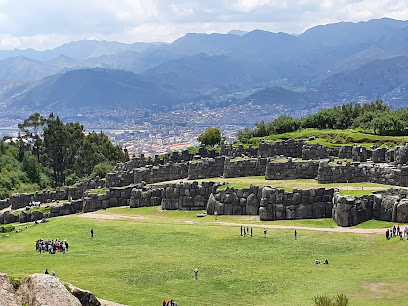
Parque Arqueológico Pisac
Explore the Inca legacy at Parque Arqueológico Pisac, a stunning archaeological site with breathtaking views and rich history in Peru's Sacred Valley.
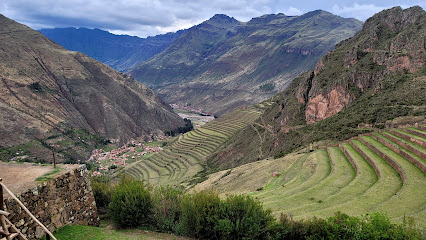
Monumento Inca Pachacutec
Explore the Monumento Inca Pachacutec in Cusco, a majestic tribute to the Incan emperor showcasing rich history and breathtaking views.

Pikillacta
Explore Pikillacta, an ancient Wari city near Cusco, and uncover the mysteries of Peru's rich archaeological heritage.
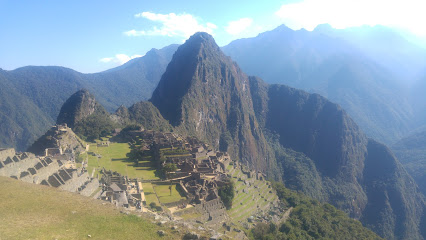
Morada De Los Dioses
Discover the enchanting blend of art and culture at Morada De Los Dioses, a unique Peruvian attraction featuring exquisite handicrafts and local cuisine.
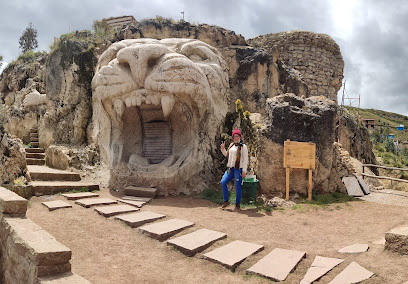
Sun Gate
Experience the breathtaking views and ancient history of the Sun Gate, the gateway to Machu Picchu, in the heart of the Sacred Valley.
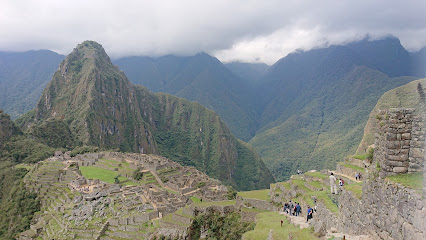
Mandor
Explore Mandor: A breathtaking ecological park in Aguas Calientes, showcasing diverse flora and serene hiking trails amidst stunning landscapes.
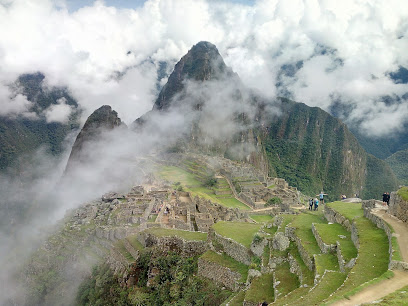
MachuQolqa Viewpoint
Experience the breathtaking beauty of the Andes at MachuQolqa Viewpoint, a must-see destination for nature lovers and photography enthusiasts in Peru.
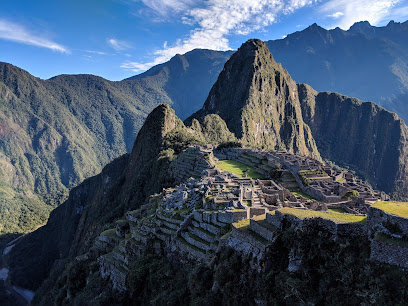
Choquequirao Archaeological Park
Discover the ancient secrets of Choquequirao Archaeological Park, a breathtaking Inca site nestled in the Andes, offering rich history and stunning views.
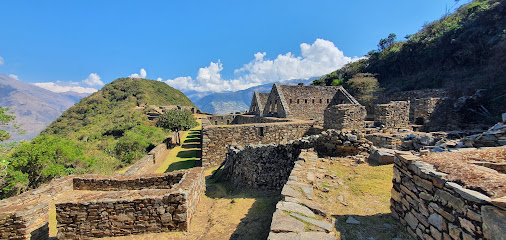
Manuel Chávez Ballón Site Museum
Explore Peru's rich pre-Columbian heritage at the Manuel Chávez Ballón Site Museum near Machu Picchu, a must-visit archaeological gem.
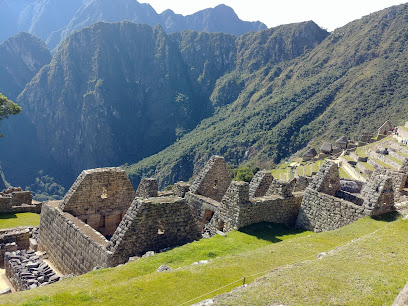
Sacred Rock at Machu Picchu
Discover the breathtaking Sacred Rock at Machu Picchu, an iconic symbol of Inca civilization amidst stunning Andean landscapes.

Ministry of Culture (Machu Picchu Park Passes)
Discover the gateway to Machu Picchu at the Ministry of Culture, where your adventure into Incan history begins with essential park passes and valuable insights.
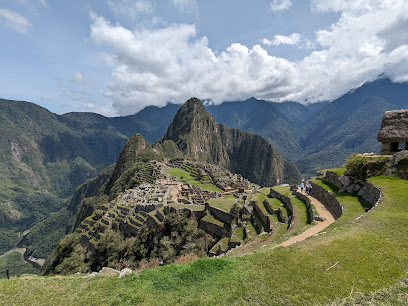
Unmissable attractions to see
Historic Sanctuary of Machu Picchu
Explore the majestic ruins of Machu Picchu, a UNESCO World Heritage site showcasing the brilliance of the Inca civilization amidst breathtaking Andes landscapes.
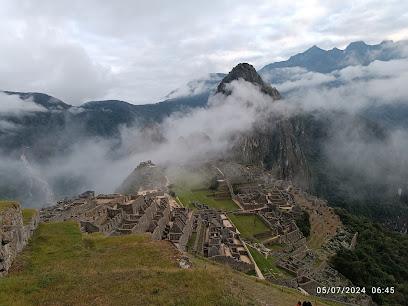
Moray
Explore Moray, an ancient Inca site with stunning circular terraces showcasing innovative agricultural practices amidst breathtaking Andean landscapes.
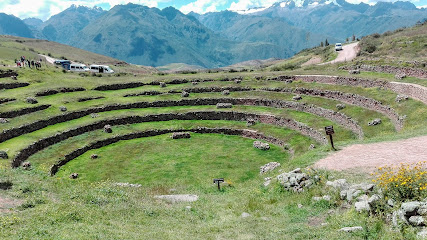
Museo Inkariy
Discover the rich tapestry of pre-Incan history at Museo Inkariy, an immersive cultural experience in the heart of the Sacred Valley.
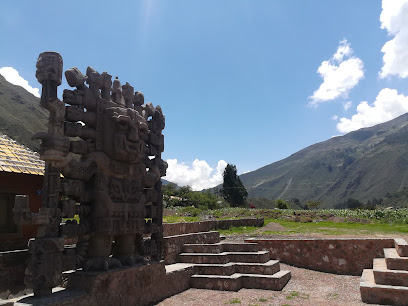
Mandor
Explore Mandor, an enchanting ecological park in Aguas Calientes, offering stunning views, diverse flora, and peaceful hiking trails amidst the Andes.
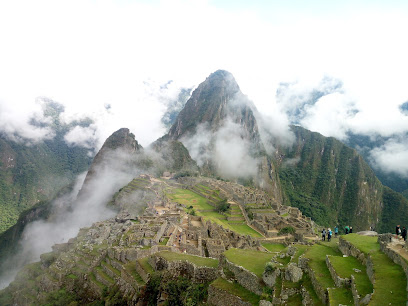
Sitio arqueológico Pinkuylluna
Uncover the ancient secrets of the Pinkuylluna Archaeological Site near Ollantaytambo, where stunning views and rich history await every traveler.
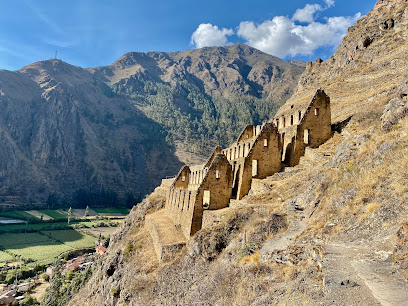
Mariposario of Machu Picchu
Explore the vibrant Mariposario of Machu Picchu, a butterfly sanctuary with over 2,000 species amid breathtaking natural beauty.
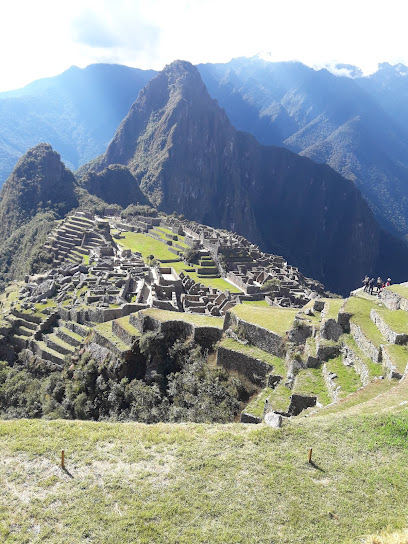
MachuQolqa Viewpoint
Explore the stunning MachuQolqa Viewpoint in Huayllabamba, a mesmerizing spot for breathtaking Andean landscapes and unforgettable adventures.
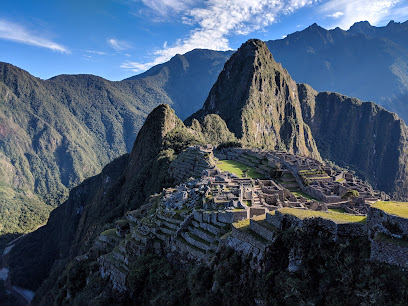
Museo Casa Concha
Explore the rich history of Machu Picchu at Museo Casa Concha in the heart of Cusco, where Inca artifacts and stories come to life.
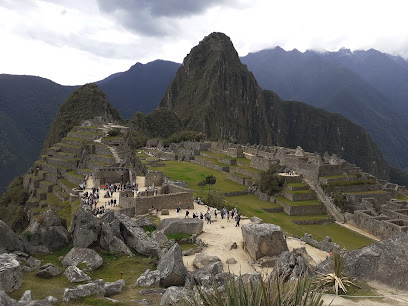
Sacred Rock at Machu Picchu
Discover the Sacred Rock at Machu Picchu, a mystical formation steeped in Incan heritage, offering breathtaking views and a serene atmosphere.

MOUNTAIN VIEW EXPERIENCE
Discover the breathtaking views and exquisite flavors at Mountain View Experience in Maras, Peru – a perfect blend of nature and cuisine.
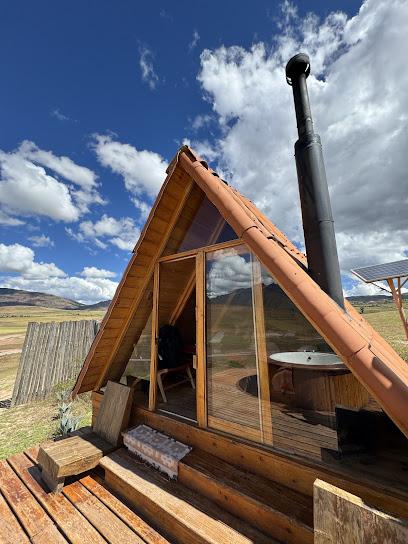
Ministry of Culture (Machu Picchu Park Passes)
Experience the culture and history of Machu Picchu at the Ministry of Culture in Aguas Calientes, your gateway to the Inca civilization.
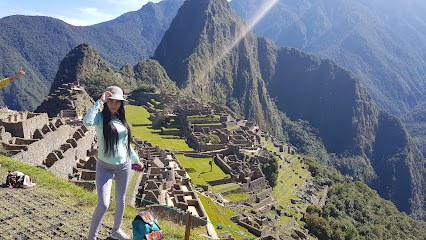
Temple of the Three Windows
Discover the architectural marvel of the Temple of the Three Windows in Machu Picchu, where ancient Incan history and breathtaking landscapes unite.
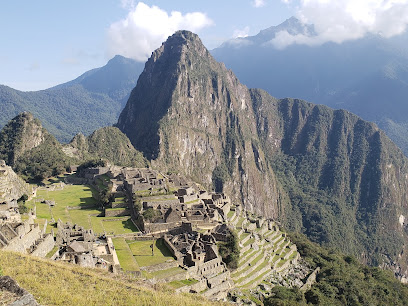
Machu Picchu Peak
Explore Machu Picchu Peak: A breathtaking blend of ancient Incan history and stunning natural beauty, perfect for adventurous travelers in Peru.
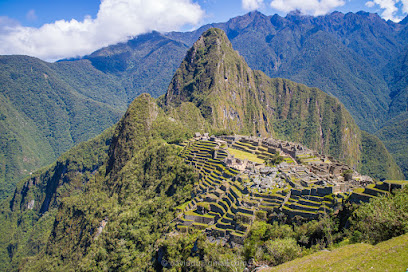
House of the Guardian to the Funerary Rock at Machu Picchu
Explore the enchanting House of the Guardian to the Funerary Rock at Machu Picchu, a key highlight steeped in Inca history and breathtaking views.
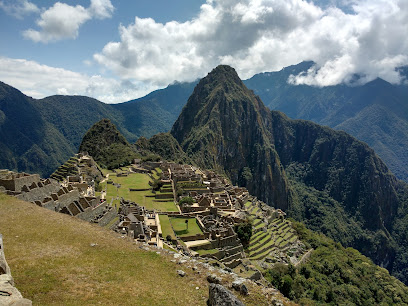
Juchuy Coscco
Explore Juchuy Coscco: A hidden Peruvian gem with breathtaking views, rich history, and unforgettable hiking experiences.
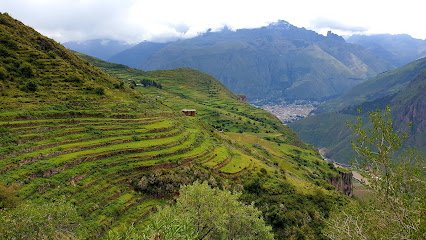
Essential places to dine
Mapacho Craft Beer Restaurant
Discover Mapacho Craft Beer Restaurant in Cusco – where traditional Peruvian cuisine meets artisanal brewing for an unforgettable dining experience.

Chullos Restaurant & Craft Beer
Experience authentic Peruvian flavors at Chullos Restaurant & Craft Beer, where tradition meets innovation in every delicious dish.
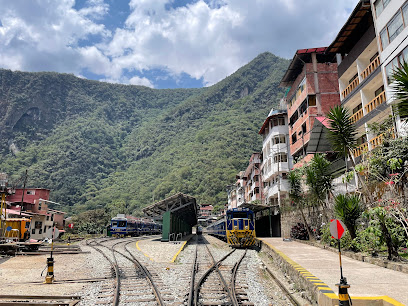
Full House Peruvian cuisine &craft beer
Experience authentic Peruvian flavors at Full House - where traditional cuisine meets local craft beer in Aguas Calientes.
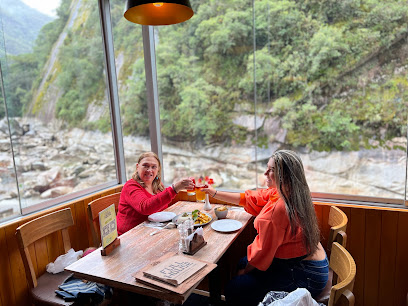
Restaurant Bistro Bar Indio Feliz
Discover exquisite Peruvian cuisine at Bistro Bar Indio Feliz in Aguas Calientes - where local flavors meet an inviting atmosphere.
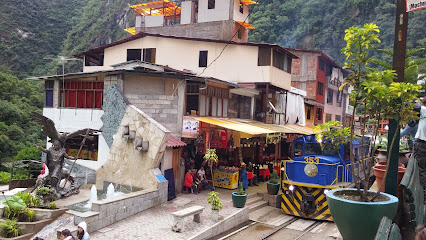
Inka Grill
Experience authentic Peruvian flavors at Inka Grill in Cusco - where tradition meets taste in every delightful dish.
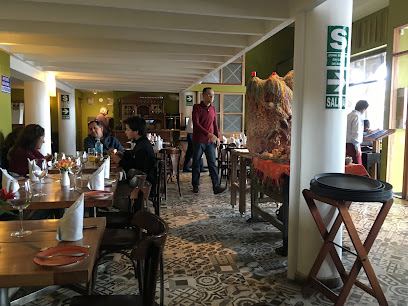
Ponchos Machupicchu Restaurant
Experience authentic Peruvian cuisine at Ponchos Machupicchu Restaurant in Aguas Calientes - where every meal tells a story.
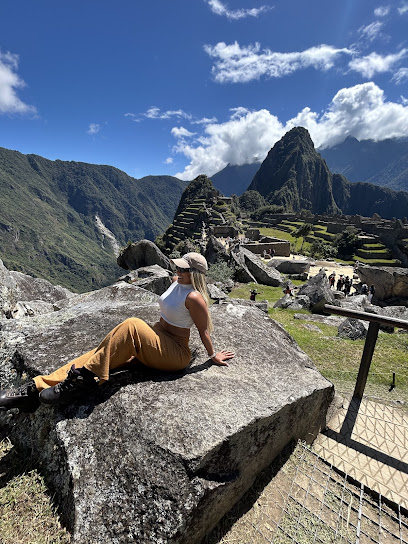
Toto's House
Experience authentic Peruvian cuisine at Toto's House in Aguas Calientes - where flavor meets tradition in a warm and welcoming setting.

Inka Wasi Restaurant
Experience authentic Peruvian cuisine in Aguas Calientes at Inka Wasi Restaurant - where culture meets flavor.
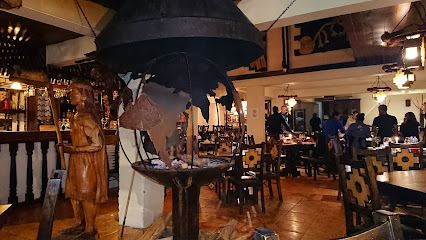
Apu Inti Restaurante
Experience authentic Peruvian flavors with stunning views at Apu Inti Restaurante in Aguas Calientes.
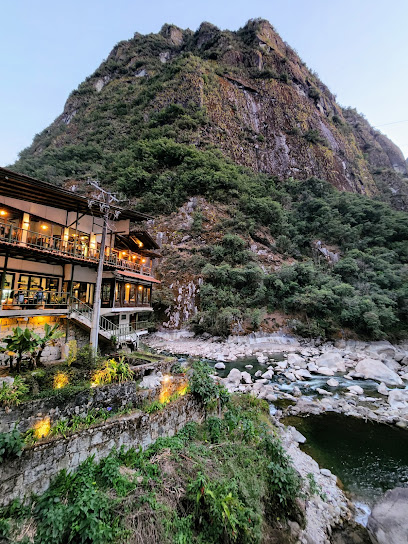
Inti House
Experience authentic Peruvian flavors at Inti House in Aguas Calientes, your culinary haven before exploring Machu Picchu.
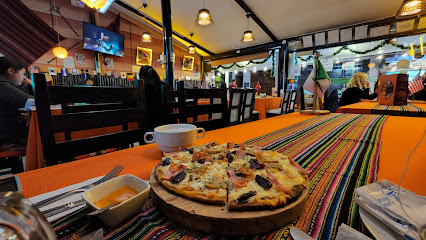
Inka Wasi Restaurant Cusco
Experience authentic Peruvian cuisine at Inka Wasi Restaurant in Cusco, where every dish tells a story of tradition and flavor.
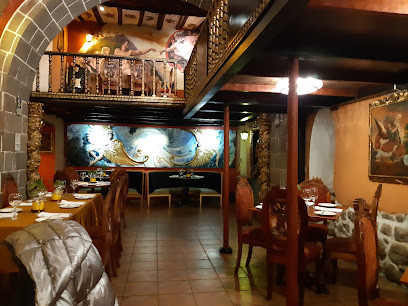
Green House
Discover organic dining at The Green House in Aguas Calientes - where sustainability meets delectable cuisine amidst breathtaking landscapes.

Taywa
Experience authentic Peruvian cuisine at Taywa in Aguas Calientes—where fresh ingredients meet traditional flavors amidst breathtaking views.
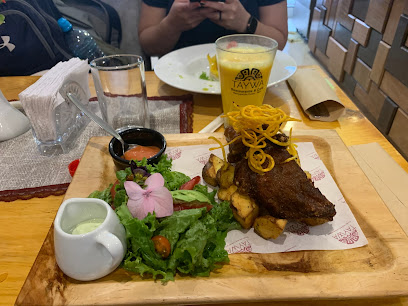
Restaurante AYASQA - Comida tradicional
Experience the heart of Peruvian gastronomy at Restaurante AYASQA in Aguas Calientes - where tradition meets flavor.

INKA TAMBO restaurant
Discover authentic Peruvian cuisine at INKA TAMBO in Aguas Calientes, where every dish tells a story of tradition and flavor.
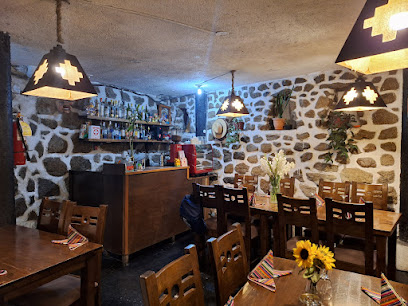
Markets, malls and hidden boutiques
Mercado Central de San Pedro
Explore the bustling Mercado Central de San Pedro in Cusco for an authentic taste of Peru's vibrant culture, food, and local crafts.

Miraflores Indian Market
Explore the Miraflores Indian Market, a vibrant hub of Peruvian culture with unique crafts, textiles, and local delicacies.
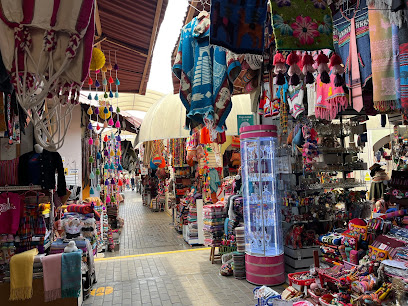
ChocoMuseo
Explore the sweet world of chocolate at ChocoMuseo, a must-visit attraction in Cusco, Peru, where you can taste, learn, and create.

Morada De Los Dioses
Explore the artistic essence of Peru at Morada De Los Dioses, a cultural hub featuring local crafts, authentic cuisine, and stunning sculptures.
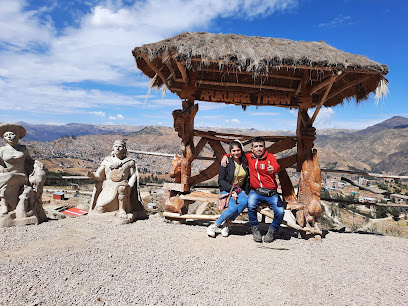
Handicraft Center Cusco
Discover unique Peruvian handicrafts and souvenirs at the Handicraft Center Cusco, a cultural treasure trove in the heart of the city.
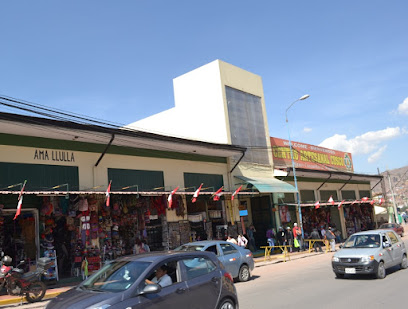
Sun Gate
Discover the breathtaking views and ancient history at Sun Gate, the gateway to Machu Picchu and the Inca Trail in Peru.
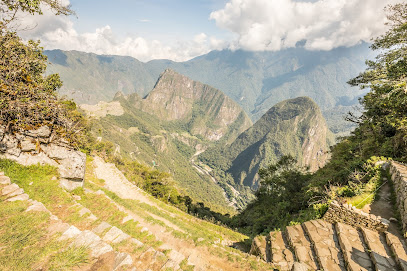
Awana Kancha
Explore Awana Kancha, a vibrant cultural attraction and museum showcasing the rich textile traditions and stunning landscapes of the Andes in Cusco.
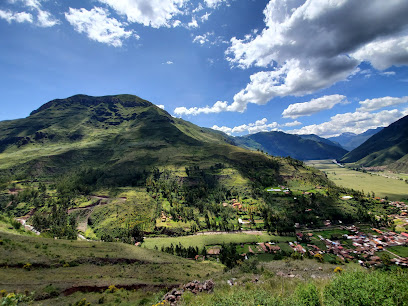
American Inca Trail
Explore the breathtaking landscapes and rich history of Peru with personalized itineraries from the American Inca Trail in Cusco.

Intipata
Explore Intipata, an extraordinary archaeological site on the Inca Trail, offering breathtaking views and rich Incan history.
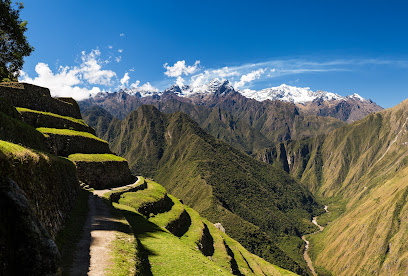
Tatoo Adventure Gear Cusco
Discover the best outdoor gear at Tatoo Adventure Gear in Cusco, your one-stop shop for camping and adventure supplies amidst Peru's stunning landscapes.
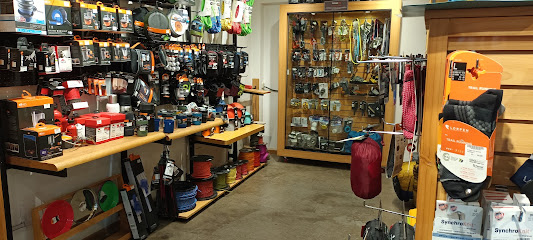
Sayacmarca
Discover the ancient Incan ruins of Sayacmarca, a breathtaking site along the Inca Trail that blends history, culture, and stunning mountain views.
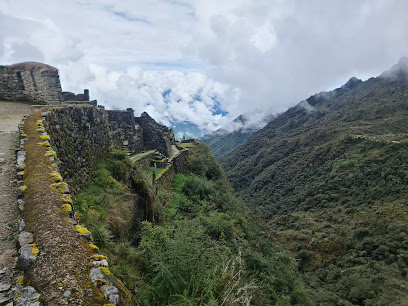
EKEKOS SAN BLAS -art & COLORS
Explore EKEKOS SAN BLAS in Cusco: a vibrant art gallery and souvenir shop showcasing exquisite handicrafts and local artistry.

Ccaccaccollo Women's Weaving Cooperative
Discover the vibrant artistry and sustainable practices at Ccaccaccollo Women's Weaving Cooperative, celebrating Peruvian textile traditions.
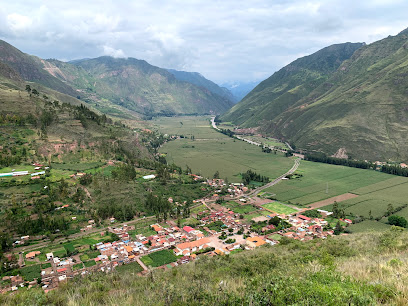
Tatoo Adventure Gear Surco
Explore the great outdoors with top-quality gear from Tatoo Adventure Gear Surco, your go-to outdoor sports store in Santiago de Surco.

Tierras Vivas
Discover the breathtaking beauty of Cusco with Tierras Vivas—your gateway to adventure sports, hiking, and unforgettable tours in the Andes.

Essential bars & hidden hideouts
LIMBUS RESTOBAR
Experience the vibrant flavors and breathtaking views at Limbus Restobar in Cusco, a perfect blend of local cuisine and lively atmosphere.
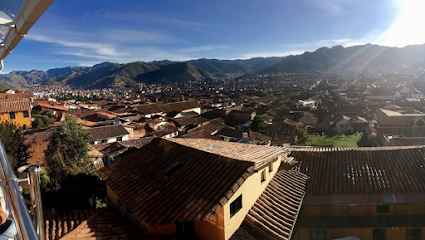
Mapacho Craft Beer Restaurant
Experience the essence of Peru with delectable dishes and exquisite craft beers at Mapacho Craft Beer Restaurant in Cusco.

Chullos Restaurant & Craft Beer
Experience authentic Peruvian cuisine and craft beers at Chullos Restaurant & Craft Beer in Aguas Calientes, a must-visit for every food lover.
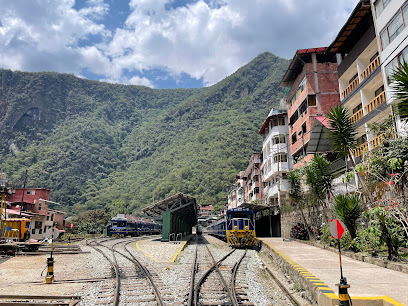
La chupiteria the shot bar
Discover the vibrant nightlife at La Chupiteria, the shot bar in Cusco offering unique cocktails and a lively atmosphere for an unforgettable experience.
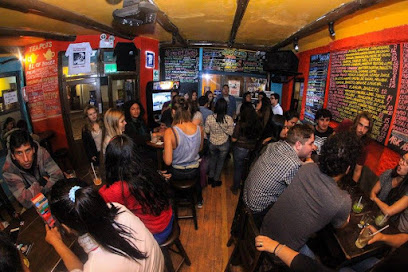
Full House Peruvian cuisine &craft beer
Experience authentic Peruvian flavors at Full House, a must-visit restaurant in Aguas Calientes, perfect for travelers exploring Machu Picchu.
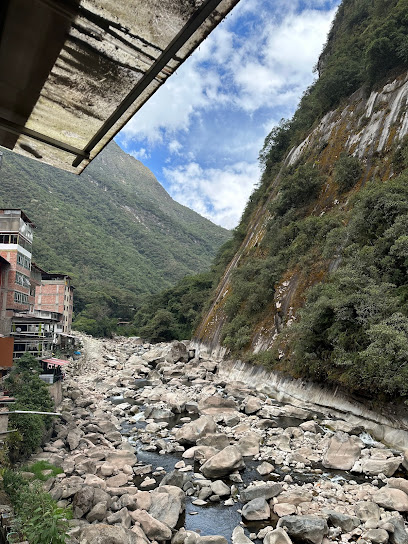
MUSEO DEL PISCO - CUSCO
Discover the rich heritage of Peru's national drink, pisco, at Museo del Pisco in Cusco, where history meets culinary delight.
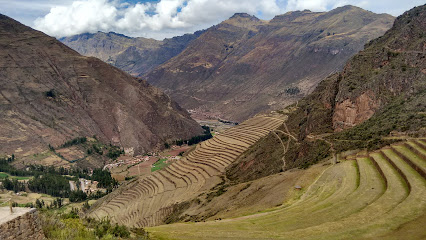
Nuevo Mundo Bar Lima
Experience the vibrant flavors of Peru at Nuevo Mundo Bar, a top grill and brewpub in Miraflores, where culinary traditions meet modern creativity.
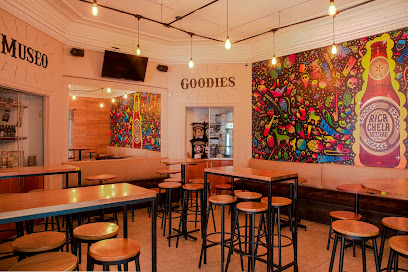
Paddy's Irish Pub
Experience the charm of an Irish pub in the heart of Cusco, where vibrant culture meets hearty food and friendly faces.
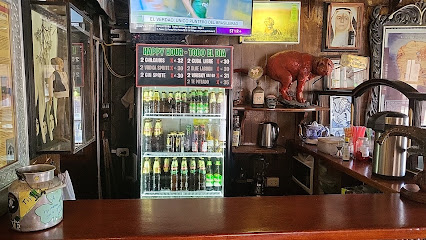
Cerveceria del Valle Sagrado
Discover the best of local craft beers and delicious food at Cerveceria del Valle Sagrado in Pachar, Peru, surrounded by breathtaking views.
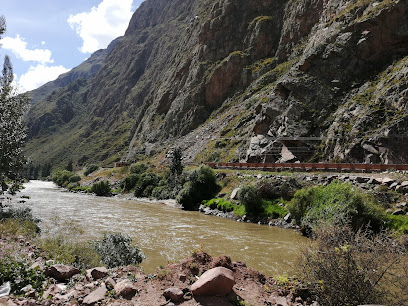
Indigo Bar Restaurant
Experience a delightful blend of Thai and grill cuisine at Indigo Bar Restaurant in Cusco, where flavorful dishes meet a vibrant nightlife atmosphere.
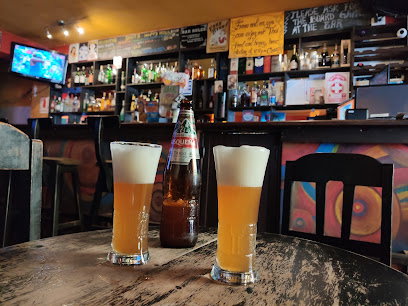
Km 0
Experience the authentic flavors of Peru at Km 0, a vibrant grill restaurant in the heart of Cusco, combining tradition and culinary excellence.
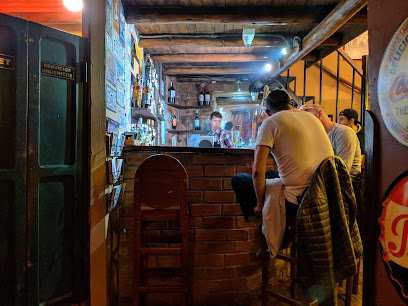
Chango Club Cusco
Experience the vibrant nightlife of Cusco at Chango Club, where the music, drinks, and dancing create unforgettable memories.
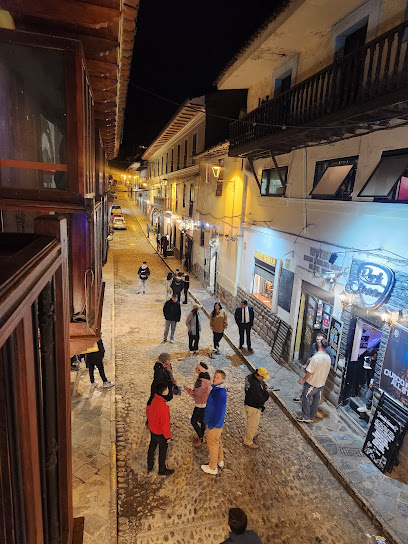
Black Cat Bar Cusco - Craft Cocktails & Spirits
Experience the vibrant nightlife of Cusco at Black Cat Bar, a top destination for craft cocktails and socializing in the city.

Sancris Restobar Mirador
Experience the best of Peruvian flavors at Sancris Restobar Mirador, where stunning views and delicious grilled dishes await in the heart of Cusco.
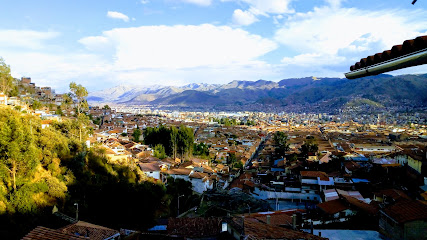
Hidden Experimental Bar
Experience the magic of innovative cocktails and creative ambiance at Hidden Experimental Bar in Miraflores, where every drink tells a story.
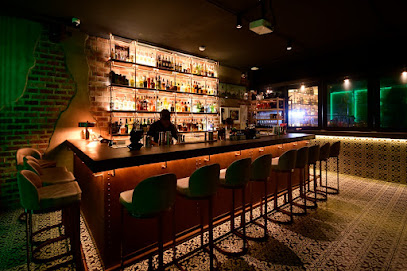
Local Phrases about Inca Trail
-
- HelloQanmi
[KAN-mee] - GoodbyeAllinllachu
[AHL-leen-YA-choo] - YesArí
[AH-ree] - NoManan
[MAH-nahn] - Please/You're welcomeSulpayki
[SOOL-pie-kee] - Thank youSulpay
[SOOL-pie] - Excuse me/SorryDispinsayki
[DEES-peen-sie-kee] - How are you?Imarayku?
[ee-ma-RAI-koo] - Fine. And you?Allin. Qanmi?
[AHL-leen. KAN-mee] - Do you speak English?Imaynallam kastilla simi rimaykuy?
[ee-mine-YA-lyam kahs-TEE-ya SIM-ee ree-MY-koo-ee] - I don't understandManam rikurini
[MAH-nahm ree-koo-REE-nee]
- HelloQanmi
-
- I'd like to see the menu, pleaseMenuyta qillqani kanki
[MAY-noo-ee-tah keel-YAH-nee KAHN-kee] - I don't eat meatQhali mana uqunmi
[KHA-lee MAH-nah oo-KOON-mee] - Cheers!Kanpai!
[KAN-pie] - I would like to pay, pleaseYaykuyta yatichiy
[YAI-koo-ee-tah yah-TEE-chee]
- I'd like to see the menu, pleaseMenuyta qillqani kanki
-
- Help!Janiyoq!
[HAH-nee-yok] - Go away!Qhaway!
[KHA-wai] - Call the Police!Polisiq qallariy!
[poh-lee-SEEK kahl-LAH-ree] - Call a doctor!Yachachiq qallariy!
[YA-cha-cheek kahl-LAH-ree] - I'm lostUmaqmi
[OO-mahk-mee] - I'm illUqsumi
[OOK-soo-mee]
- Help!Janiyoq!
-
- I'd like to buy...Suyayta qhatichiy...
[SOO-yai-tah KAH-tee-chee] - I'm just lookingÑawi qawachiy
[NYA-wee kah-WAH-chee] - How much is it?Imataq chaynallata
[ee-MAH-tahk CHAI-nahl-LAH-tah] - That's too expensiveChaypi lliwqan
[CHAI-pee LEE-wkan] - Can you lower the price?Chaypi llimpiykachiy?
[CHAI-pee LLEEMP-yee-KAH-chee]
- I'd like to buy...Suyayta qhatichiy...
-
- What time is it?Imataq waqta
[ee-MAH-tahk WAHK-tah] - It's one o'clockHuk paqarina
[hook pah-kah-REE-nah] - Half past (10)Chaymanta (10)
[CHAI-MAHN-tah (10)] - MorningPunchaw
[POON-chow] - AfternoonP'unchaw
[POON-chow] - EveningTuta
[TOO-tah] - YesterdayIllapa p'unchaw
[ee-LAH-pah POON-chow] - TodayKay p'unchaw
[KYAH POON-chow] - TomorrowKan p'unchaw
[KAN POON-chow] - 1Huk
[hook] - 2Iskay
[ees-KAI] - 3Kimsa
[keem-sah] - 4Tawa
[TAH-wah] - 5Pisqa
[PEES-kah] - 6Suyu
[SOO-yoo] - 7Qanchis
[KAN-chees] - 8Pusak
[POO-sahk] - 9Isqun
[ees-KOON] - 10Chunka
[CHOON-kah]
- What time is it?Imataq waqta
-
- Where's a/the...?Pisqa nispa...
[PEES-kah NEES-pah] - What's the address?Maypin sutiyki?
[ma-E-peen soo-TEE-kee] - Can you show me (on the map)?Imaynallam mapa qhawaychikuy?
[ee-mine-YA-lyam MAH-pah KHA-wai-CHEE-koo-ee] - When's the next (bus)?Imataq hukta...
[ee-MAH-tahk hook-tah] - A ticket (to ....)Tikiti (....-manta)
[tee-KEE-tee (...-MAHN-tah)]
- Where's a/the...?Pisqa nispa...
History of Inca Trail
-
The Inca Trail, known as 'Qhapaq Ñan' in the Quechua language, was part of an extensive network of roads that spanned the Inca Empire. It was constructed during the 15th century under the reign of Pachacuti Inca Yupanqui, the ninth Sapa Inca. This intricate system connected various regions, facilitating trade, communication, and military movements across the empire, which stretched from modern-day Colombia to Chile.
-
The Inca Trail was crucial for the chasquis, the runners who delivered messages and goods across the empire. These highly trained messengers could cover vast distances at incredible speeds, thanks to the relay stations known as 'tambos' strategically placed along the trail. The chasquis played a vital role in maintaining the unity and administration of the vast Inca Empire.
-
At the end of the Inca Trail lies Machu Picchu, one of the most iconic archaeological sites in the world. Built in the mid-15th century, this citadel is believed to have been an estate for the Inca Emperor Pachacuti. Machu Picchu's precise stonework, terraced fields, and astronomical alignments reflect the sophisticated engineering and architectural skills of the Inca civilization.
-
The Spanish Conquest in the 16th century marked a turning point for the Inca Trail and the empire it served. After the fall of the Inca Empire, the trail fell into disuse, and many of its routes were abandoned. However, the Spanish were also impressed by the engineering marvels of the Incas and utilized parts of the trail for their own purposes.
-
Interest in the Inca Trail and Machu Picchu was reignited in the early 20th century, particularly with Hiram Bingham's 'discovery' of Machu Picchu in 1911. Since then, efforts have been made to preserve and restore the trail and its associated ruins. The Inca Trail is now a protected area, with strict regulations in place to conserve its historical and cultural significance.
-
Today, the Inca Trail is one of the most popular trekking routes in the world, attracting thousands of adventurers each year. The trail offers a unique blend of natural beauty and historical intrigue, allowing trekkers to walk in the footsteps of the Incas while experiencing breathtaking Andean landscapes and ancient ruins. The journey culminates at Machu Picchu, providing a profound connection to the past.
Inca Trail Essentials
-
The Inca Trail is located in the Andes mountain range in Peru. The nearest major city is Cusco, which has an international airport, Alejandro Velasco Astete International Airport (CUZ). From Lima, the capital of Peru, you can take a direct flight to Cusco, which typically takes about 1-1.5 hours. Once in Cusco, you will need to take a bus or taxi to Ollantaytambo, and then a train to Kilometer 82, the starting point of the Inca Trail.
-
Transportation options in and around the Inca Trail include buses, taxis, and trains. In Cusco, taxis and buses are readily available. For the journey to the trailhead, you can take a tourist bus or taxi to Ollantaytambo, followed by a train to Kilometer 82. The train journey offers scenic views and is operated by PeruRail and Inca Rail. The hike itself is a multi-day trek, so be prepared for walking long distances.
-
The official currency in Peru is the Peruvian Sol (PEN). Credit cards are accepted in major hotels, restaurants, and shops in Cusco, but it's advisable to carry cash for smaller purchases and when traveling to remote areas like the Inca Trail. ATMs are available in Cusco, but it’s a good idea to withdraw sufficient cash before starting the trek. Keep some small bills for tips and minor expenses.
-
The Inca Trail is generally safe for tourists, but standard precautions should be taken. Petty theft can occur in crowded areas, so keep an eye on your belongings. Avoid walking alone at night in unfamiliar areas of Cusco. Stay on the marked trails during the trek to avoid getting lost. It’s important to acclimatize to the altitude in Cusco before starting the trek to prevent altitude sickness.
-
In case of an emergency, dial 105 for police assistance or 116 for medical emergencies in Peru. On the Inca Trail, guides are trained in first aid and carry communication devices for emergencies. It's crucial to have travel insurance that covers medical emergencies and evacuation. In Cusco and along the trail, there are medical facilities and clinics where you can seek help if needed.
-
Fashion: Do wear comfortable, layered clothing suitable for hiking. Avoid wearing flashy jewelry. Religion: Do respect local customs, especially when visiting religious sites. Always ask for permission before taking photos of people. Public Transport: Do be respectful and courteous. Avoid loud conversations on buses and trains. Greetings: Do greet people with a friendly 'Hola' or 'Buenos días'. Eating & Drinking: Do try local dishes like ceviche and lomo saltado. Don't drink tap water; always opt for bottled or purified water.
-
To experience the Inca Trail like a local, spend some time in Cusco before the trek to acclimatize and explore. Visit local markets like San Pedro Market for fresh produce and traditional Peruvian goods. Engage with locals and learn a few basic phrases in Quechua, the indigenous language. Consider hiring a licensed local guide to gain deeper insights into the history and culture of the Inca civilization.
Trending Landmarks in Inca Trail
-
Historic Sanctuary of Machu Picchu
-
Plaza Mayor de Cusco
-
Ollantaytambo Sanctuary
-
Saqsaywaman
-
Parque Arqueológico Pisac
-
Monumento Inca Pachacutec
-
Pikillacta
-
Morada De Los Dioses
-
Sun Gate
-
Mandor
-
MachuQolqa Viewpoint
-
Choquequirao Archaeological Park
-
Manuel Chávez Ballón Site Museum
-
Sacred Rock at Machu Picchu
-
Ministry of Culture (Machu Picchu Park Passes)
Nearby Cities to Inca Trail
-
Things To Do in Cusco
-
Things To Do in Ayacucho
-
Things To Do in Huancayo
-
Things To Do in Ica
-
Things To Do in Arequipa
-
Things To Do in Puno
-
Things To Do in Copacabana
-
Things To Do in Lima
-
Things To Do in Tacna
-
Things To Do in La Paz
-
Things To Do in Arica
-
Things To Do in Huaraz
-
Things To Do in Iquique
-
Things To Do in Cochabamba
-
Things To Do in Trujillo











